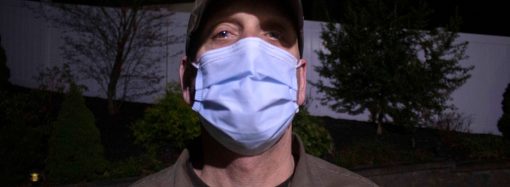By Xenia Gonikberg
JRN 217
“The most blatant sexism that I’ve seen while working in the field was at Brookhaven National Lab… I was taking notes and one of my supervisors looked over my shoulder and said, ‘See, this is why I always ask the women to take notes, your handwriting is so much prettier’..I was also told not to lift heavy equipment but it wasn’t even that heavy. It was something I could lift, but they specifically said, ‘Oh, we’ll get the boys to take care of that,” Lauren Cottral said.
As technology continues to advance, the need for jobs in STEM–science, technology, engineering, and math– has increased substantially. However, as the job growth has spiked, progress has been uneven across the board. Women continue to make up less of the population in certain fields, despite seeing some progress in representation.
Women make up only half of the workforce in STEM jobs, according to a Pew research article. They are overrepresented in healthcare but are underrepresented in areas relating to science and engineering. Women only make up 15% of engineers and architects, but they make up 74% of healthcare workers. They are less likely to work in STEM jobs and make up less than 25% of the U.S population working in STEM related areas.
This divide is only the tip of the iceberg. Between navigating sexism in their fields, the lack of female role models and all too familiar pressure to choose between starting a family and having a career, there are many factors at play that discourage women from becoming engineers or scientists. Women of color have a significant disadvantage in STEM fields, as black and latina women make an average of $33,000 a year in STEM in comparison to white women and men, who make on average $60,000 and $85,000 a year, respectively.
In particular, women are not given adequate resources, proper mentorship, and the room to advance in their careers due to societal pressures and stereotypes. At Stony Brook University, the WISE program -Women in Science and Engineering- aims to provide female students with a network of mentors who help them pursue careers in science and math.
Cottral is a sophomore biochemistry major and a student in Stony Brook’s WISE program. She notes that the STEM curriculum is “an uphill battle” in general, but paired with instances of sexism, it is a driving factor as to why many women don’t continue their studies in math or science.
Cottral has witnessed instances of sexism from her professors and experienced it at her internship at Brookhaven National Lab, and she said that it can be really demeaning and discouraging.
“There is sort of a competitiveness against your fellow females, because when women are chosen less, you see other women as a threat,” Cottral said. ‘And it’s something I noticed, not only at Stony Brook, but in a lot of places. It’s hard to make female companionship in your own field because you’re both competing for the same spot. And there might only be one spot for girls when there’s two spots for guys.”
In Stony Brook’s math department, there is a substantial lack of female students. Alexander Kirillov, the chair of the math department, notes that there are 175 female students in the undergraduate mathematics program in comparison to 362 male students.
“This problem is not unique to our department – most math departments around the country will tell similar stories,” Kirillov said. “It is a well-known problem: Women are very much underrepresented in math.”
And this is not just the case in the undergraduate department. The disparity in enrollment in the graduate program at Stony Brook is stark: there are only 14 women in Stony Brook’s math PhD program in comparison to the 58 men enrolled.
In addition, women have less flexibility in terms of career choices. Often, they have to make decisions that can hinder them from advancing their careers.
“Once you get to the graduate level studies, there can definitely be inadequate opportunities, but there is also the stigma that comes with a woman choosing to pursue their career over starting a family,” Kristen Vadasz said. Vadasz is an assistant lecturer at Stony Brook and the Assistant Director for the Biotechnology Teaching Laboratories, which helps middle and high school students get exposed to “topics in science they may not have had the opportunity to experience hands-on in school,” thereby fostering an early interest in STEM related fields.
The WISE program provides an invaluable network for female students to feel supported in their careers–a rare opportunity afforded to few women entering STEM fields.
“They’re preparing you not only to meet bias and, like, discrimination, but also to meet just the demands of the world, like asking for a salary,” Cottral said.
Several of the most notable faculty members in the WISE program have been instrumental in helping students like Cottral navigate through Stony Brook’s ruthless STEM program. One of these faculty members, Lauren Donovan, taught Cottral in a class called “Women and Gender in STEM.” This class helps students like Cottral examine gender disparities in STEM fields through social, political and personal lenses.
“Many times, it’s access. Also, once they are in these industries, it could be a harsh, unwelcoming environment. Often, not having a supportive network could sway women out of areas like engineering,” Donovan said.
Programs like WISE help build girls confidence around math and science. With the support of faculty, professors and peers, women in WISE have a network that rallies around them as they progress into their professional lives.
“The best thing we can do is to encourage women – at different stages of their career – to go into math [and other STEM fields],” Kirillov said.
